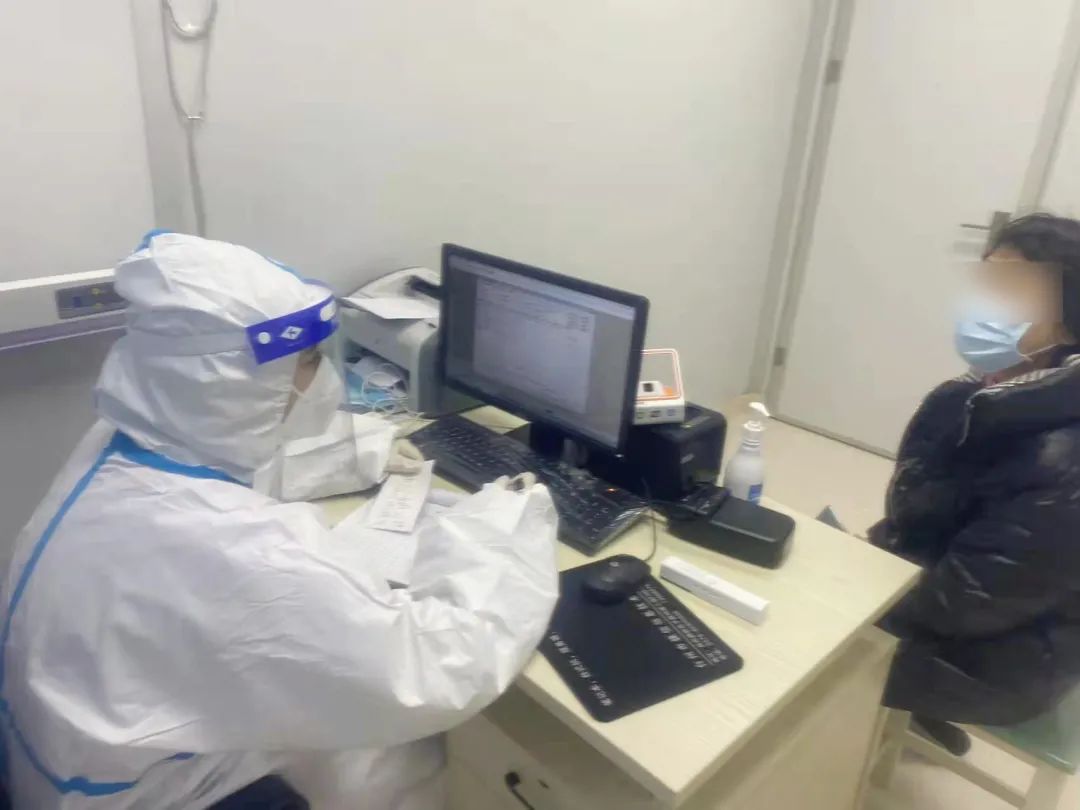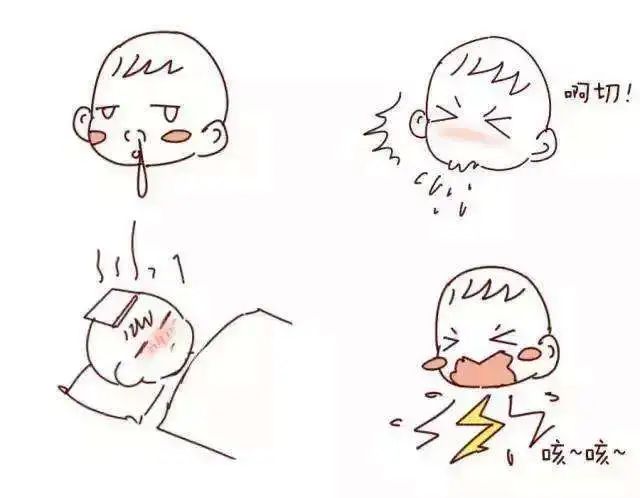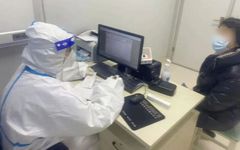
As the weather fluctuates between warm and cold,
even though we have put on cotton shirts and pants,
if we do not wrap ourselves up properly, it is still easy to catch a cold.
Recently, there have been many more friends suffering from colds than usual.

(Many cold patients are receiving treatment)
Once you have caught a cold,
the first step is to determine what type of cold you have,
according to TCM theory,
colds are generally classified into Wind-Heat and Wind-Cold types.
The causes and symptoms of these two conditions are different,
and we need to carefully assess.
1. Wind-Cold Cold: This is caused by the invasion of Wind-Cold evil and the failure of Lung Qi to disperse.
Symptoms: Severe chills, mild fever, no sweating, headache and body aches, nasal congestion with clear discharge, cough with thin white phlegm, no thirst or preference for warm drinks, and a thin white tongue coating.
2. Wind-Heat Cold: This is caused by the invasion of Wind-Heat evil and the disharmony of Lung Qi.
Symptoms: High fever, slight aversion to wind, headache with a feeling of fullness, sweating, red and swollen sore throat, cough with sticky or yellow phlegm, nasal congestion with yellow discharge, thirst with a preference for cold drinks, red tip and edges of the tongue, and a thin white coating with slight yellow.
For colds,
scientific prevention is essential!
What can we do to effectively prevent colds?

1
Drink plenty of water
In daily life, it is important to drink enough water to keep the body hydrated and prevent dehydration, especially after catching a cold. Drinking more water helps detoxify the body and prevent colds.
Experts recommend maintaining a steady intake of water, but not drinking large amounts at once; instead, drink intermittently. The daily water intake should not be less than 1500 milliliters, ideally reaching 2000 milliliters, and it is beneficial to add vitamin C effervescent tablets to the water.
2
Ensure good air circulation
To prevent colds, it is also important to keep living spaces well-ventilated. Windows should be opened twice a day for about 20 minutes each time to reduce the proliferation of pathogenic microorganisms in the air and effectively prevent colds. The indoor humidity should be maintained at a certain level.
Children’s rooms must be ventilated; parents should not be afraid that children will catch a cold from the wind, as the stagnant air in a closed room is more detrimental to their health.
3
Gargle with salt water
Gargling with salt water can help inhibit the proliferation of bacteria and viruses, establishing a health barrier in the mouth, nose, and throat.
It is advisable to gargle with diluted salt water in the morning, evening, and after meals to eliminate oral bacteria. During flu season, gargling with salt water is especially important.To prepare, dissolve one teaspoon of salt in 500 milliliters of water for gargling. It is best to gargle with 10 milliliters after brushing teeth in the morning and evening, holding it in the mouth for one minute. Tilting the head back while gargling can enhance the effect of rinsing the throat.
4
Massage the nose
About 50% of colds are caused by rhinoviruses, and since the nasopharynx is the initial site of infection, massaging the nose can effectively prevent colds.
First, use the index finger and thumb to massage the sides of the nose (Yingxiang point) about 20-30 times, then gently massage the tip and wings of the nose with warm palms. Additionally, washing the nose with cold water daily can not only remove dirt and bacteria but also enhance the adaptability of the nostrils and the entire upper respiratory tract to cold.
5
Limit spicy and salty foods
Ensure regular and balanced meals, eat a variety of foods, and avoid picky eating; refrain from excessive consumption of meat or binge eating; avoid alcohol. Additionally, purposefully consume more immune-boosting dark vegetables, fruits, mushrooms, and algae.
From the perspective of TCM dietary therapy, food choices should be low in spicy and salty flavors, and high in sour and sweet flavors, avoiding bitter and dry foods. This means eating less pungent foods like scallions, ginger, leeks, garlic, and peppers, as well as heavily salted foods like pickles, while increasing the intake of sour or sweet foods such as pears, jujubes, citrus fruits, bananas, loquats, Chinese yam, and spinach. Foods with bitter flavors like bitter melon, bitter herbs, and fried foods should be minimized.
6
Dress warmly in the morning and evening
For the elderly, children, and those with weaker constitutions and lower immunity, it is essential to wear a coat when going out in the morning and evening. Those with weaker constitutions should pay extra attention to warmth. When choosing clothing, consider comfort, protection, and health.
As the temperature difference between day and night increases, we must pay attention to warmth, especially for patients with cardiovascular diseases and bronchial asthma, who should be careful to adjust their clothing accordingly.
7
Ensure 8 hours of sleep
If you sleep less than 7 hours a day, your chances of catching a cold increase threefold. Sleep disturbances or lack of sleep can affect immune system activity, and going to bed early and rising early can reduce the risk of thrombosis, thereby preventing cardiovascular diseases.
Additionally, nighttime temperatures are much lower than during the day, so it is important to keep warm, change to appropriately thick bedding early, and manage windows to avoid wind invasion, ensuring good sleep quality.
8
Engage in appropriate exercise
Whether for adults or children, appropriate exercise can enhance the body’s immunity. Gentle or moderate exercise can stimulate immune system function; however, about 90 minutes of high-intensity exercise can lead to the release of stress hormones and anti-inflammatory molecules, suppressing immune function and making individuals more susceptible to colds and flu.
For children, exercise methods do not need to be overly strict, as this may lead to aversion. Simple activities based on their interests, such as running, playing basketball, or soccer, with about an hour of outdoor playtime each day, are ideal.
9
Soak feet in hot water
In cold weather, the extremities tend to be cold. Soaking feet in water at 40°C to 50°C for 15 minutes each night is beneficial. The water should cover the feet, and if it cools down, add more hot water gradually to allow the body to adapt to the temperature; avoid adding excessively hot water at once to prevent burns. Ensure the water level covers the feet, and after soaking, the feet should be red to help prevent colds.
TCM believes that colds are often caused by external evils and dysfunction of the Lung’s defensive mechanism. Foot baths are based on the principles of dispersing Lung Qi and expelling evils through sweating. Modern studies show that herbs like Huang Qin (Scutellaria baicalensis), Sang Ye (Mulberry leaf), and Ju Hua (Chrysanthemum) have antibacterial and antiviral properties, as well as the ability to disperse wind and clear heat. Soaking feet in medicinal baths can improve blood circulation, enhance immune function, reduce inflammation, and shorten the duration of illness, thereby preventing complications and recurrence of colds.
10
Avoid contact with sources of infection
Minimize contact with individuals who have colds. Avoid crowded public places. Especially maintain a distance from sick colleagues; if you must shake hands or exchange items, ensure to wash your hands promptly. If a sick colleague is nearby, avoid touching your face as a protective measure. When cold patients cough for extended periods, consciously cover your nose and mouth with a high collar or scarf.
Try to avoid taking children to crowded, polluted places, and minimize visits to relatives or friends who are sick to reduce the risk of infection. If someone at home has a cold, it is best to limit contact with children or have the patient wear a mask.

By following the above guidelines, you can effectively fend off the “cold virus”! Note
Note
If cold symptoms persist for more than a week
without gradually improving and insteadshowing signs of worsening,
you should seek medical attention promptly to prevent complications.

1.How to Distinguish Between Colds and Allergic Rhinitis in Spring? How to Avoid Rhinitis Attacks?
2.Manual Osteopathy | Observing the “Inheritance” and “Innovation” of Boai Orthopedics
3.Assessment Promotes Development, Uniting for Progress — Taizhou Boai Hospital Medical Community Welcomes the 2021 Annual Performance Assessment
Editor | Ding Jianping
Reviewer | Jin Zhichao


